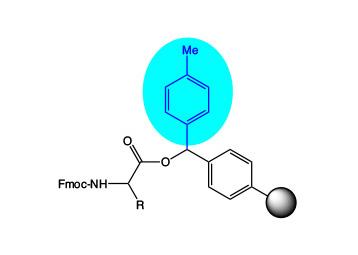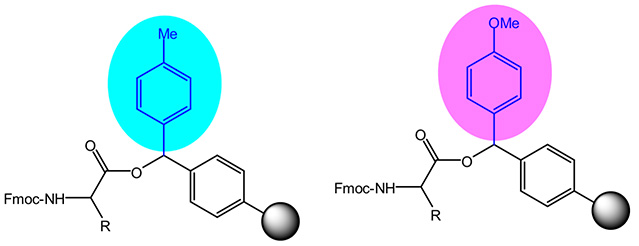Welcome to Iris Biotech
For better service please confirm your country and language we detected.

For better service please confirm your country and language we detected.

Thank you very much for your interest in our products. All prices listed on our website are ex-works, Germany, and may attract customs duties when imported.
You may/will be contacted by the shipping company for additional documentation that may be required by the US Customs for clearance.
We offer you the convenience of buying through a local partner, Peptide Solutions LLC who can import the shipment as well as prepay the customs duties and brokerage on your behalf and provide the convenience of a domestic sale.
Continue to Iris Biotech GmbHSend request to US distributorPublished on 03/03/2015

Wang resins are widely used for peptide synthesis. However, certain side reactions, like diketopiperazin formation limit their use. 4-Methylbenzhydryl resin needs more space and leaves less room for this type of side reactions.
Standard “Wang-typical” Fmoc/tBu coupling protocols can be applied.

The difference between Wang-Resin and 4-Methylbenzhydryl-Resin is the additional toluyl residue, which will increase the sensitivity towards acids only slightly, so Wang-typical protocols for coupling and cleavage still can be used.
An increased acid sensitivity can be gained by introduction of a methoxy function. This resin is highly acid sensitive and therefore ideal for synthesis of peptide fragments. It also is a good alternative to 2-Chlorotrityl-Resin in case of use of amino acids with high sterical hindrance.
Preloaded resins with all natural amino acids on both 4-Methylbenzhydryl-Resin and 4-Methoxybenzhydryl-Resins are commercially available and can be supplied from lab scale to bulk: